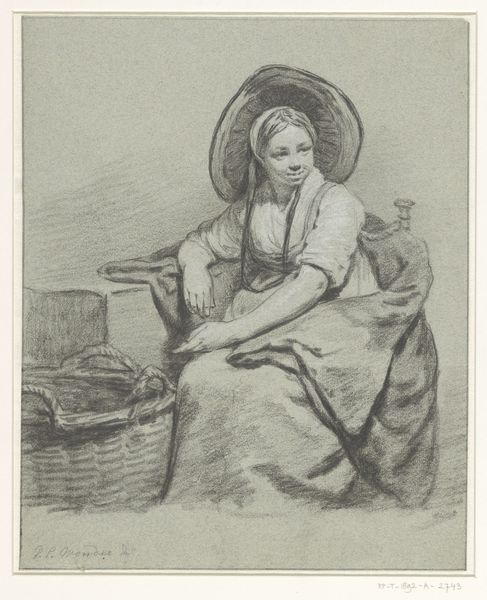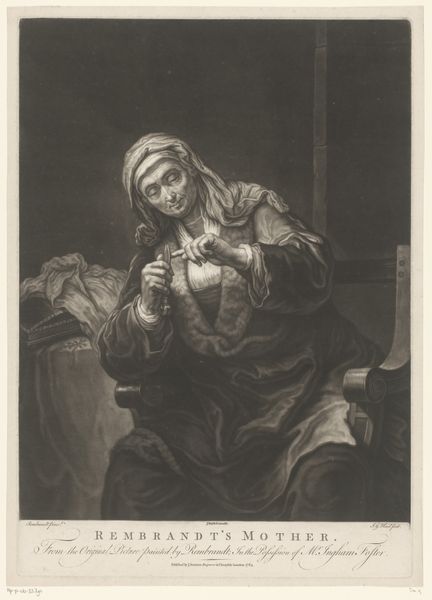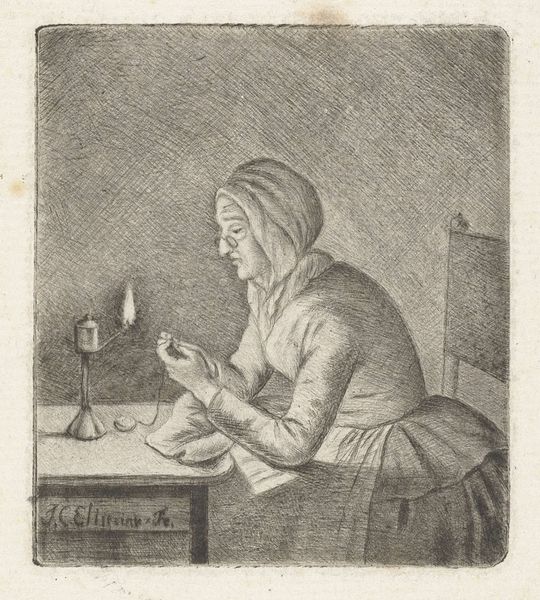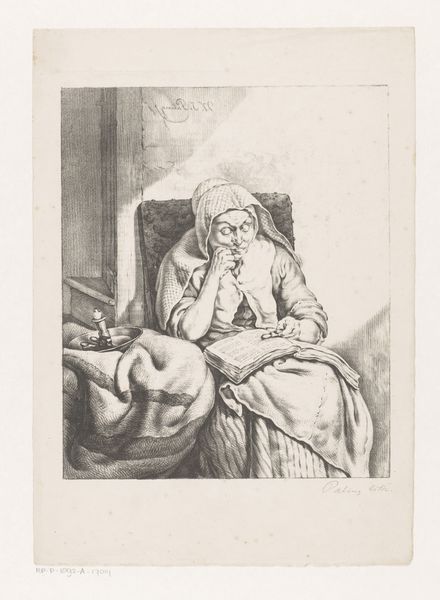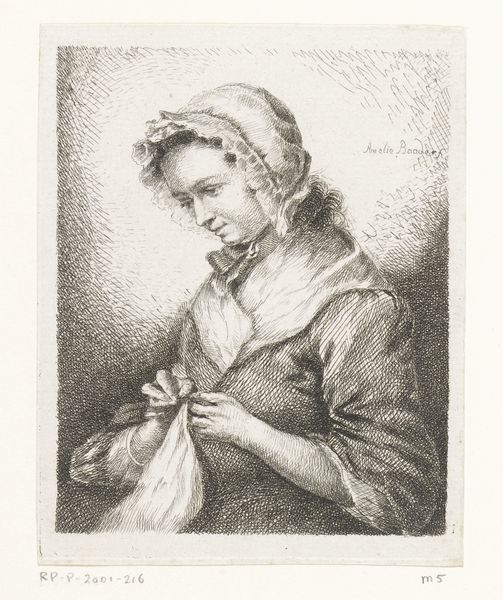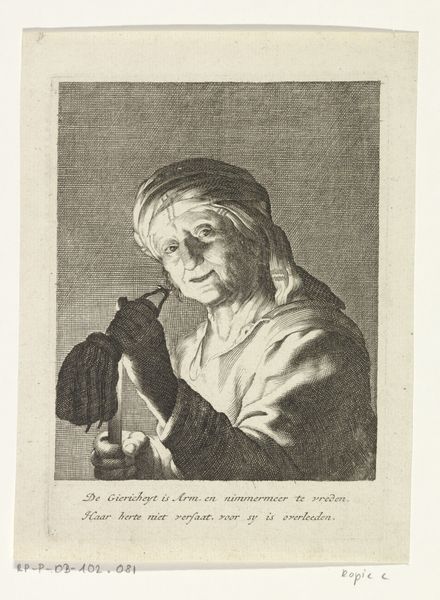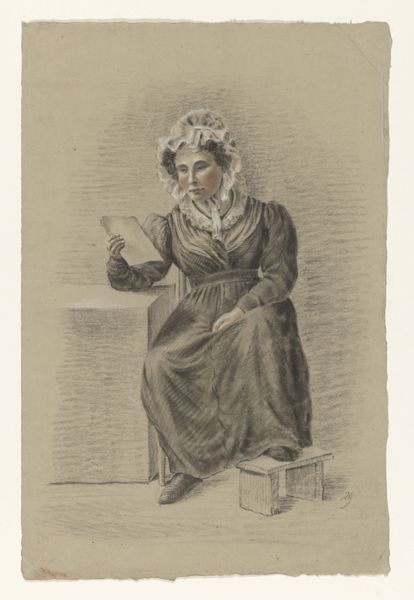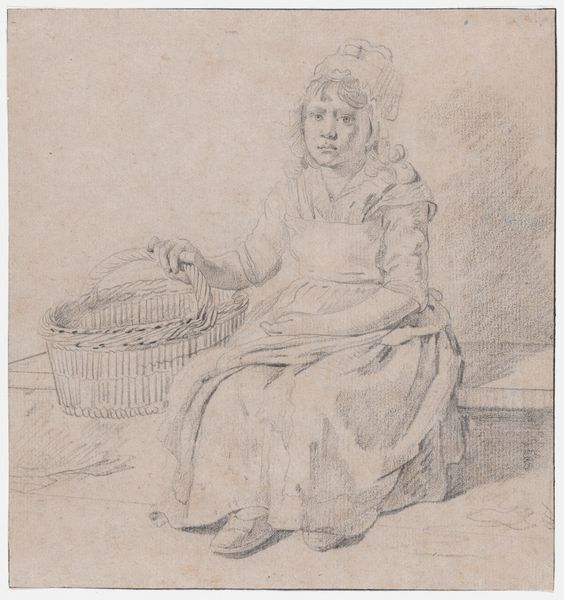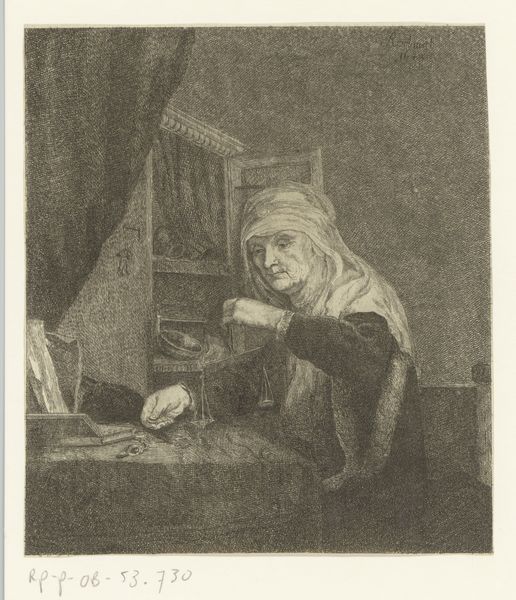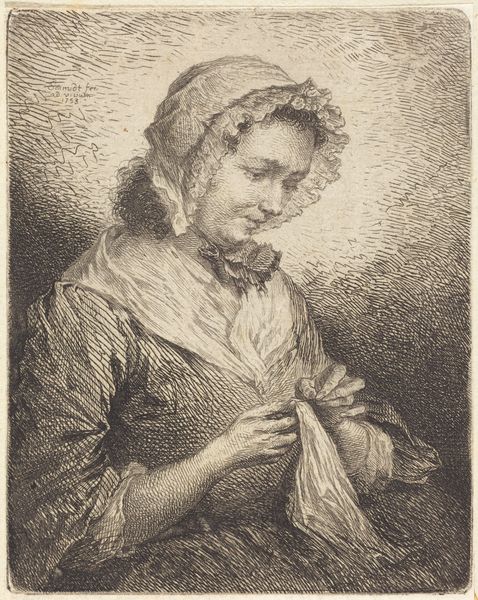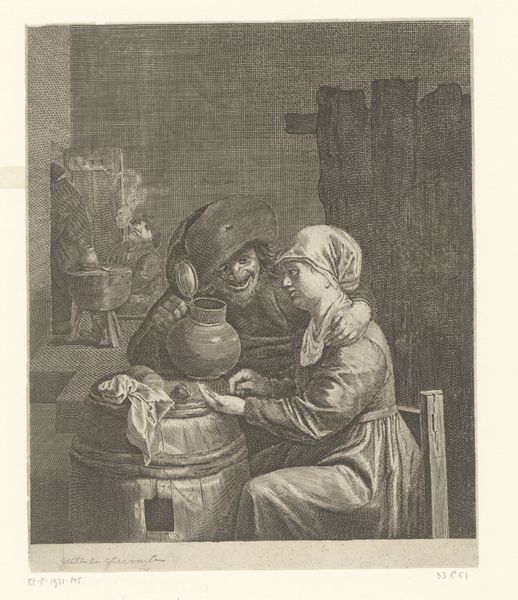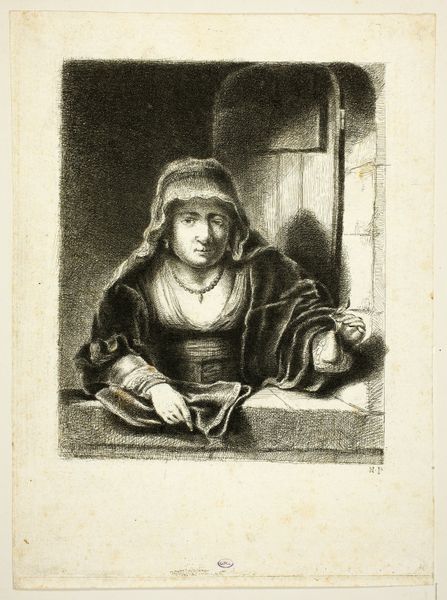
The Old Woman; from the Office of The Count of Vence 1782 - 1797
0:00
0:00
Dimensions: Sheet (trimmed): 13 3/16 × 8 13/16 in. (33.5 × 22.4 cm)
Copyright: Public Domain
Curator: Looking at this print, "The Old Woman; from the Office of The Count of Vence," made sometime between 1782 and 1797 by Pierre François Basan, I'm immediately struck by how stark it is. The textures of the clothing, the shadows in the room… It speaks to the Baroque style and the themes found in genre painting from this time. Editor: The austerity certainly sets a tone. The image really conveys a weariness, the weight of years, visible in the posture of the subject. Even in reproduction, the image pulls me into her narrative. Curator: Absolutely, the engraving work helps amplify this emotional landscape. Here we see her holding a cane, a symbol of aging, or infirmity. You see the wear in her face, and then your eyes goes to this odd table setup. Editor: That table! The setup gives such a lived-in quality to the space, but beyond pure aesthetic pleasure, I can’t help but wonder about her access to resources, care, and dignity. Who gets seen, and how are they rendered? Is she representative of a broader social truth? Curator: The artist produced prints for collectors. The inclusion in "The Office of the Count of Vence" implies an elite audience consuming images of the lower classes. It raises the issue of how this artwork performs a certain kind of looking. What does it mean to see her depicted in this fashion for leisure? Editor: Exactly, so it's more than just genre-painting, we have to look at the power dynamics here. Are we invited to empathize, or to simply observe a specimen of poverty and aging for our own amusement or moralizing purposes? Curator: It's a complex question, with answers steeped in the social and political hierarchies of the late 18th century. These Baroque prints provided glimpses into different worlds, however interpreted. Editor: And in engaging with those complexities we must push ourselves beyond a superficial reading of this work, in the process of historicizing and looking for intersectional voices that may disrupt easy meaning making. It's our role today, perhaps, to wrestle with the historical forces behind such representation and what it invites in us now.
Comments
No comments
Be the first to comment and join the conversation on the ultimate creative platform.
